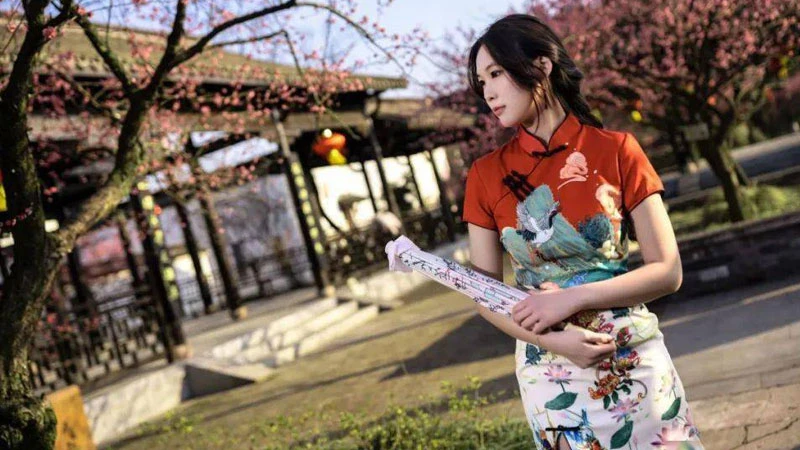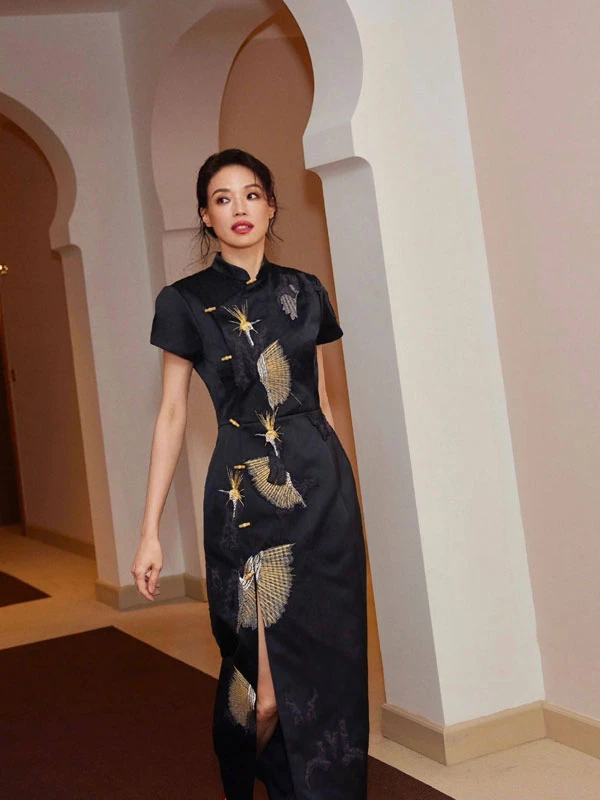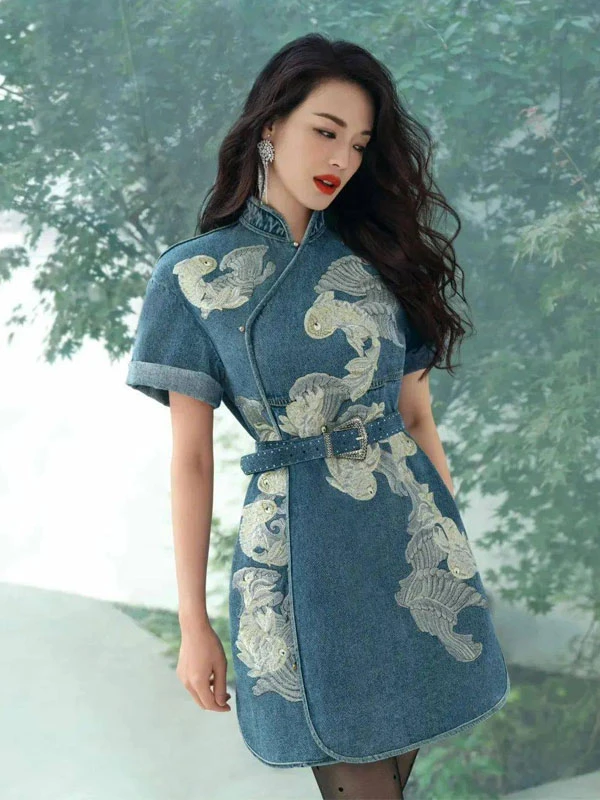New Chic Meets Ancient Charm: The Qipao Revolution
In the heart of Hangzhou, a city renowned for its picturesque West Lake and rich cultural heritage, 23-year-old Zhang Ting eagerly anticipates the upcoming Mid-Autumn Festival. Unlike previous years, Zhang isn't just planning to indulge in mooncakes and family gatherings. This year, she and her friends are embarking on a unique cultural journey – donning carefully selected neo-Chinese qipaos for a photoshoot amidst the ancient waterways of Shaoxing (绍兴).
"There's something magical about blending the old with the new," Zhang muses, her eyes sparkling with excitement. "Wearing a modern qipao in a setting that has remained unchanged for centuries – it's like being a time traveler, bridging generations through fashion."
Zhang's enthusiasm is not an isolated phenomenon. Across China, a sartorial revolution is underway, spearheaded by the country's vibrant Gen Z population. Traditional Chinese aesthetics are experiencing a renaissance, reimagined and reinterpreted for the 21st century. This movement, dubbed "neo-Chinese fashion," (新中式穿搭) has taken the nation by storm, particularly around traditional festivals like the Mid-Autumn Festival.
In Taizhou's Linhai City, the bustling Ziyang Street tells a tale of this cultural resurgence. Yin Xiaobo, the owner of the "Xiqizhe" qipao brand, can barely keep up with the influx of young customers. "The neo-Chinese qipao retains the essence of the traditional garment but offers more design freedom," Yin explains. "We've moved away from the strict adherence to standing collars, slanted lapels, and high slits. Our designs are more relaxed, catering to the modern aesthetic while honoring our heritage."
The Global Appeal of Neo-Chinese Fashion
This fusion of old and new has struck a chord with China's youth. Social media platforms are abuzz with hashtags like #NewChineseStyleMidAutumnFestival, accumulating billions of views. Young people are not just wearing these outfits; they're engaging in discussions about traditional culture, effectively turning fashion into a gateway for cultural exploration and appreciation.
The phenomenon extends beyond clothing. Yin's brand has expanded to include neo-Chinese vests and horse-face skirts, catering to a growing appetite for cultural fashion that goes beyond special occasions. "We're seeing young people incorporate these elements into their daily wear," Yin notes. "It's no longer just about festival attire; it's becoming a lifestyle choice."
The roots of this fashion revolution run deep, particularly in places like Linhai's Yongquan Town. Since the Qing Dynasty, this region has been renowned for its embroidery. In the decades following the founding of the People's Republic of China, it became a hub for garment processing. Since 2012, an increasing number of local businesses have pivoted towards neo-Chinese qipao production, catalyzing the industry's growth.
The numbers speak volumes. According to recent surveys, Yongquan produces over 40% of China's qipaos and controls 50% of the country's qipao wholesale channels. This concentration of expertise and resources has created a fertile ground for innovation and entrepreneurship.
Take Yin Mengsha, for instance. At just 20 years old, she's built a following of over 30,000 on social media platforms, where she livestreams and sells qipaos. "The engagement is incredible," Yin shares. "I get questions ranging from which qipao is suitable for a family Mid-Autumn dinner to requests for children's qipaos with rabbit embroidery. It's clear that people are looking for ways to connect with their culture through fashion."
The appeal of neo-Chinese fashion isn't limited to domestic markets. Feng Yanjun, president of the Linhai Qipao Association, notes a growing international demand. "I have a client selling qipaos in Canada," Feng says. "He's seen a year-on-year increase in young people purchasing qipaos. The intricate embroidery, vibrant colors, and elegant silhouettes are often in short supply."
This global interest underscores a broader trend – the increasing soft power of Chinese culture on the world stage. As young Chinese embrace and reinterpret their heritage, they're creating a cultural export that resonates with international audiences.
The neo-Chinese fashion movement is more than just a trend; it's a reflection of a generation seeking to reconcile their modern identities with their cultural roots. It represents a unique blend of respect for tradition and a desire for individual expression.
As the sun sets over Hangzhou's West Lake, Zhang Ting adjusts her neo-Chinese qipao, ready for an evening of mooncake tasting and lantern lighting. Her outfit, with its traditional silhouette and modern fabric, embodies the spirit of her generation – honoring the past while boldly stepping into the future.
"Wearing this, I feel connected to generations of Chinese women before me," Zhang reflects. "But I also feel entirely myself, a young woman of the 21st century. That's the beauty of neo-Chinese fashion – it allows us to be both timeless and thoroughly modern."
They're not just changing wardrobes – they're weaving a new narrative of cultural identity, one stitch at a time. The revival of traditional aesthetics, reimagined for the modern era, is more than a fashion statement. It's a powerful expression of cultural pride and a bridge between generations, promising to shape China's cultural landscape for years to come.



